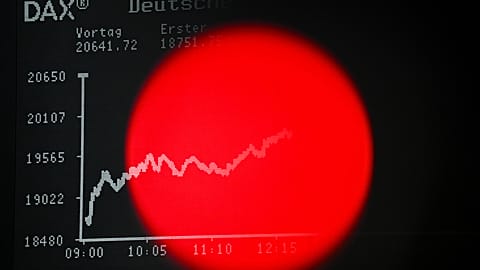Crude oil prices surged to a one-week high amid escalating tensions in the Middle East and a weakening US dollar on Monday.
Crude oil prices were higher in the early Asian session amid the escalating conflict in the Middle East over the weekend.
Both benchmark oil prices reached a one-week high, with Brent futures rising by 0.66% to $79.54 per barrel and WTI futures climbing by 0.68% to $75.34 per barrel at 7am CEST.
Potential escalation of the Middle East conflict
On Sunday, Israel said it conducted preemptive strikes over southern Lebanon to thwart an attack from the Lebanese Islamic group Hezbollah.
Hezbollah said it still managed to launch hundreds of rockets and drones targeting Israel, a retaliation for the killing of its senior leader in July.
The military confrontation has raised concerns about a broader Middle East conflict, particularly given the ongoing tensions between Iran and Israel.
Consequently, fears of disruptions to oil supplies have buoyed oil markets, as the conflict could lead to additional Western sanctions on Iran.
According to Reuters, no agreement was reached during the Gaza ceasefire talks on Sunday. The meeting, held in Cairo, saw neither Hamas nor Israel agreeing to the proposed compromises.
The talks, backed by the US, aimed to end the 10-month conflict between Hamas and Israel sparked by last year's 7 October attack. Sunday's strikes exemplify the failure of ceasefire negotiations and will likely lead to broader regional conflicts.
Oil prices are expected to continue rising in response to the escalating tensions in the Middle East.
Oil prices could rise further due to weakened US dollar
The US dollar weakened significantly against other major currencies in the G-10 group following the Jackson Hole Symposium on Friday.
Federal Reserve Chairman Jerome Powell indicated a likely rate cut in September, which was perceived as a pivotal shift in monetary policy.
The dollar is expected to continue its downward trend due to this policy change, potentially supporting a further surge in oil prices.
Other central banks, including the European Central Bank and the Bank of England, have also hinted at further rate cuts for the remainder of the year.
Easing monetary policies could stimulate economic growth in these major economies, thereby optimising the global demand outlook.
Ongoing undersupply worries
Oil markets surged by more than 4% in the first week of August amid rising demand and escalating tensions following Iran's vow of military retaliation after the assassination of a Hamas leader.
However, oil prices retreated sharply in mid-August due to disappointing Chinese economic data and signs of easing tensions in the Middle East.
The recent weekend escalation, however, could cause oil markets to rebound.
Data from the US Energy Information Administration (EIA) revealed that oil inventories fell by 4.65mn barrels for the week ending 16 August, compared to the expected draw of 2mn barrels.
The decline in stockpiles resumed after an increase the previous week, following six consecutive weekly decreases up to 2 August.
According to the EIA, OPEC+ production cuts are expected to reduce global oil inventories over the next three quarters, potentially driving oil prices higher.
In June, OPEC and its allies agreed to extend production cuts of 3.66mn barrels per day until the end of 2025, with additional voluntary cuts of 2.2mn barrels per day continuing until September this year.
The organisation, which accounts for over 37% of the world’s total oil supply, has been reducing output since 2022, resulting in a total cut of 5.86mn barrels per day, representing 5.7% of global demand.


















